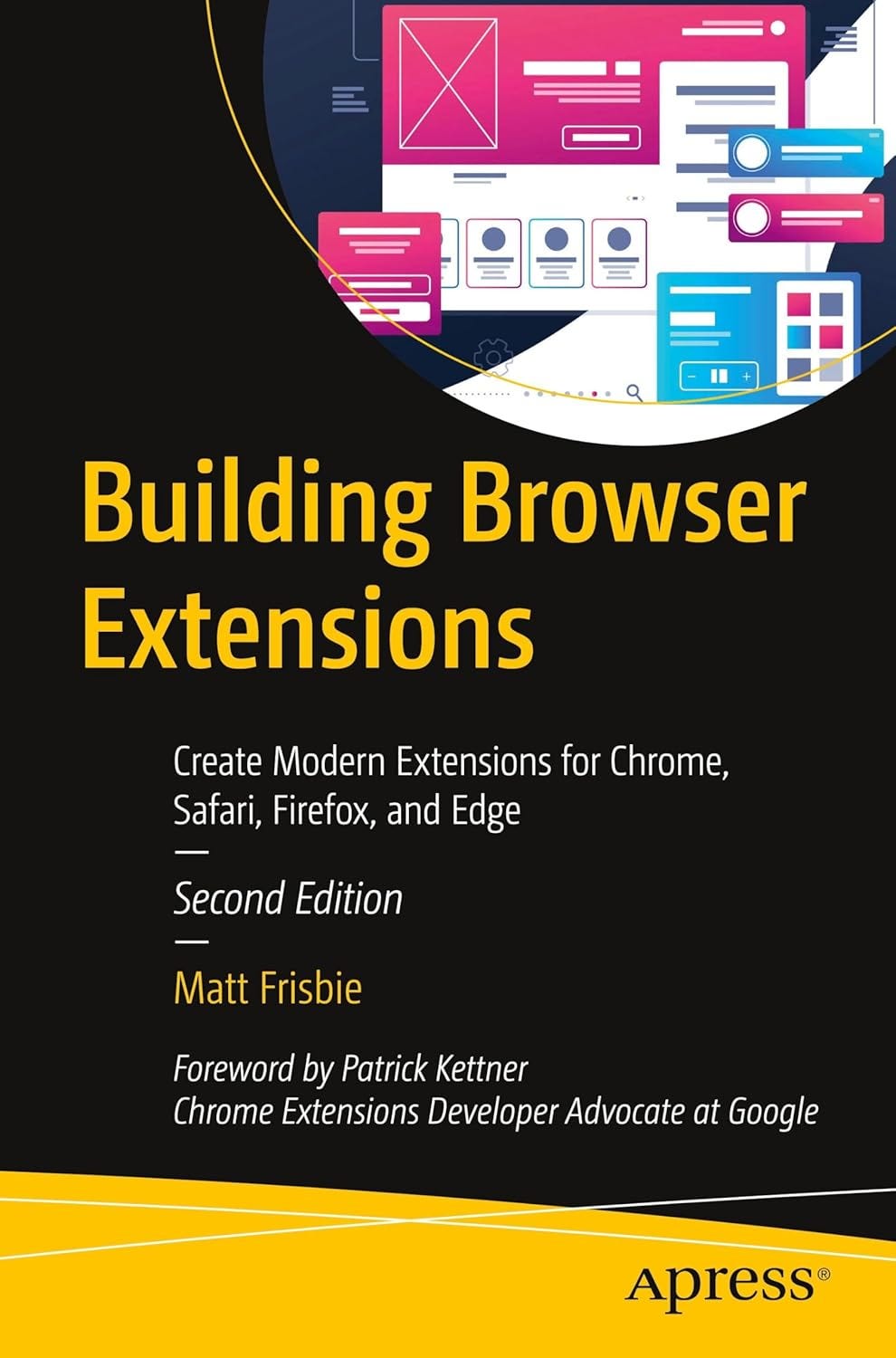Announcing the 2nd Edition of Building Browser Extensions
Updated with the latest APIs, practical LLM examples, and extensive tutorials
I wrote the first edition of Building Browser Extensions in 2022 to address what I judged to be a dire need in the extension ecosystem.
Development was poorly documented and under-resourced.
There were no practical, developer-focused guides that explained how extensions actually worked.
Web developers had powerful APIs available to them, but most didn’t realize just how much could be accomplished inside the browser environment.
The transition to Manifest V3 was also reshaping extension development, and developers urgently needed guidance to navigate the changes.
The reception to the 1st edition was overwhelmingly positive. Developers and companies alike immediately identified the value of a high-quality text covering extension development.
A few months after the first edition was published, OpenAI released ChatGPT, and the large language model boom transformed software development, including and especially extension development. In 2025, it has never been easier to build and publish an extension. At the same time, an entirely new category of LLM-powered extensions has emerged. With this second edition, I wanted to capture both the timeless fundamentals of extension development and the new opportunities that have opened up.
Extensions are insanely powerful pieces of software. In the hands of a careful developer, they are elegant tools that unlock capabilities websites can’t reach. In the hands of an inexperienced developer, they can be clumsy or insecure. In the hands of a malicious actor, they become vehicles for infiltration and theft. This book gives you the tools to ensure your extensions are efficient, secure, and reliable.
The WebExtensions API has advanced considerably in recent years. Manifest V3 is now the standard across Chromium browsers, and new additions like the side panel, offscreen documents, user scripts, and vendor-specific APIs such as the Chrome Prompt API are covered in depth.
One of the most frequent requests I heard after the first edition was for more tutorials. In response, I dedicated an entire chapter to hands-on projects that walk through real-world extensions. You’ll learn how to build:
Tab managers
Screen recorders
Ad blockers
Password managers
User script managers
AI chatbots
Monetized extensions
Extension tooling has also come a long way. React remains the most widely used framework, but new platforms such as Vite, Extension.js, and WXT have grown in popularity. I’ve updated the book’s coverage of frameworks and tooling to reflect how developers actually work today.
You Will Learn:
The fundamental building blocks of browser extensions and how they interact with the browser
How to avoid common pitfalls that can lead to vulnerabilities, performance issues, or marketplace rejections
How to master the entire development lifecycle, from writing your first extension to publishing in the Chrome Web Store, Firefox Add-ons, and other repositories
Best practices for networking, authentication, storage, and extension management
How to build with modern tools, languages, and frameworks
New for This Edition:
Coverage of the latest APIs: side panel, offscreen documents, user scripts, and vendor-specific APIs like the Chrome Prompt API
Hands-on tutorials for building extensions including monetization strategies, AI assistants, password managers, ad blockers, and DevTools integrations
Updated coverage of frameworks and tooling such as Vite, Extension.js, and WXT
Patrick Kettner, the Chrome Extension Developer Advocate who brought me into the Google Developer Expert program, generously served as both the foreword author and technical editor. The book is considerably stronger because of his expert contributions.
I sincerely hope you enjoy!
-Matt Frisbie


